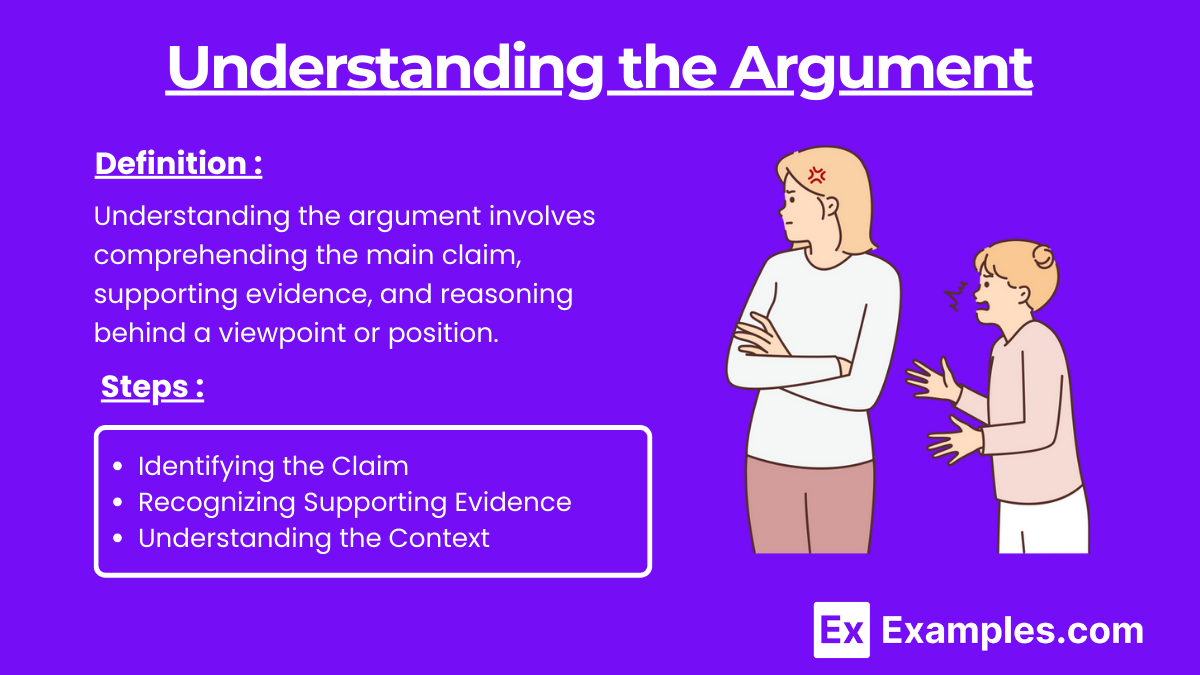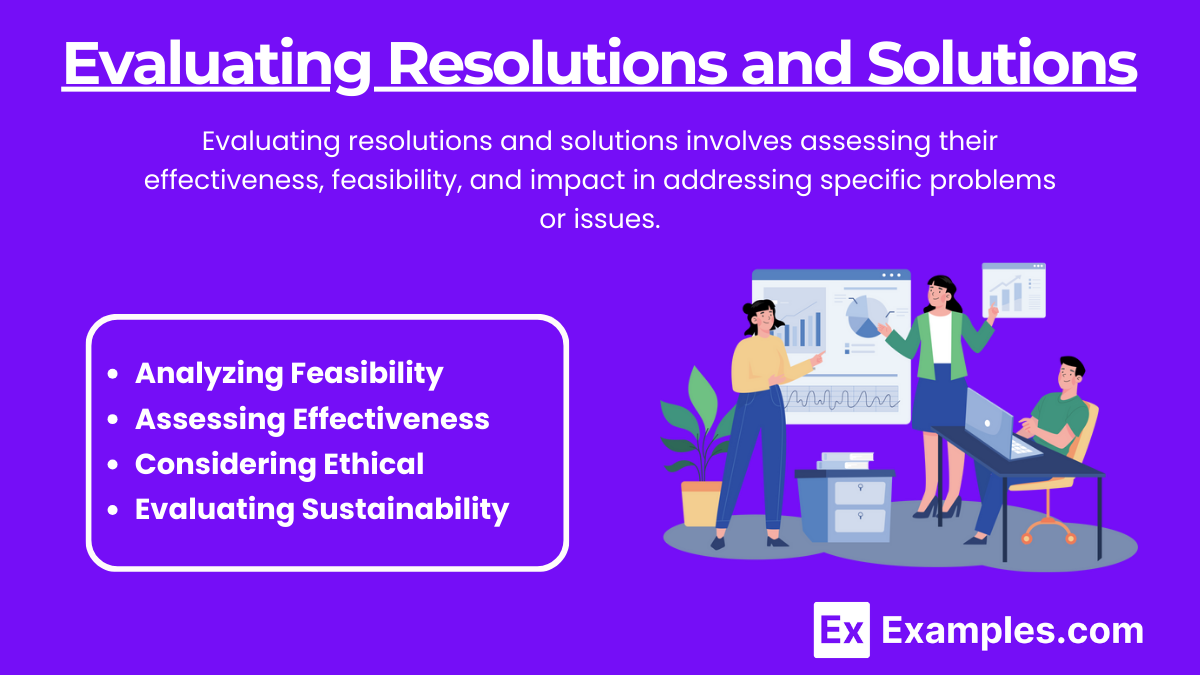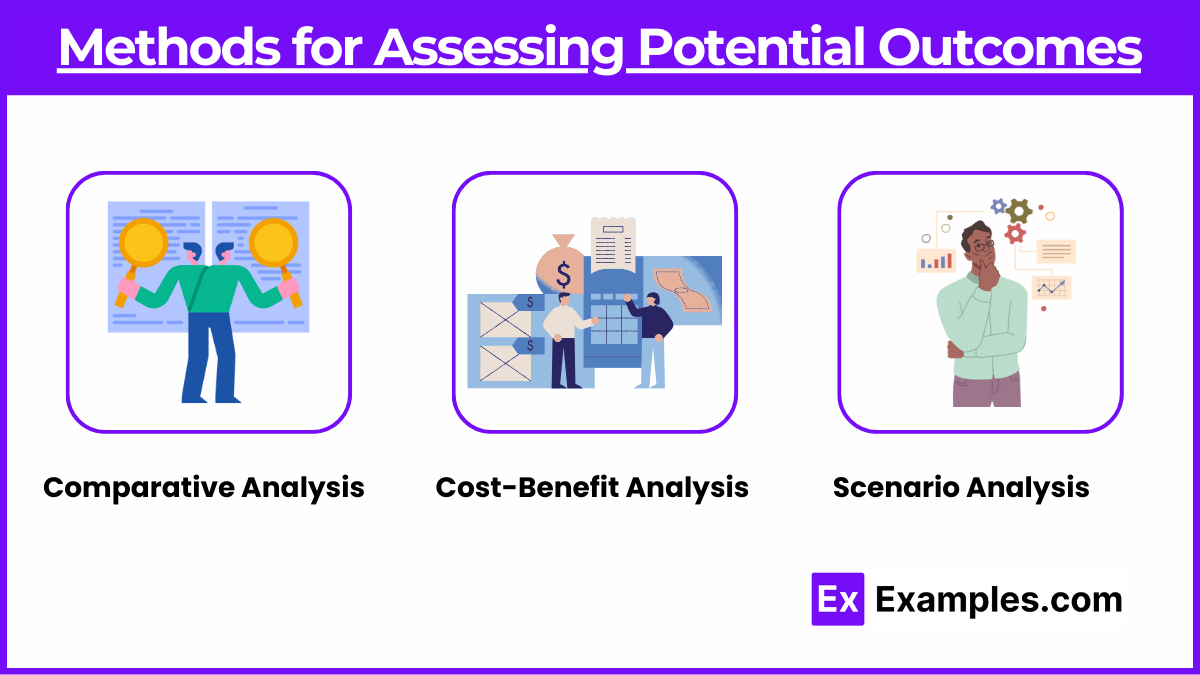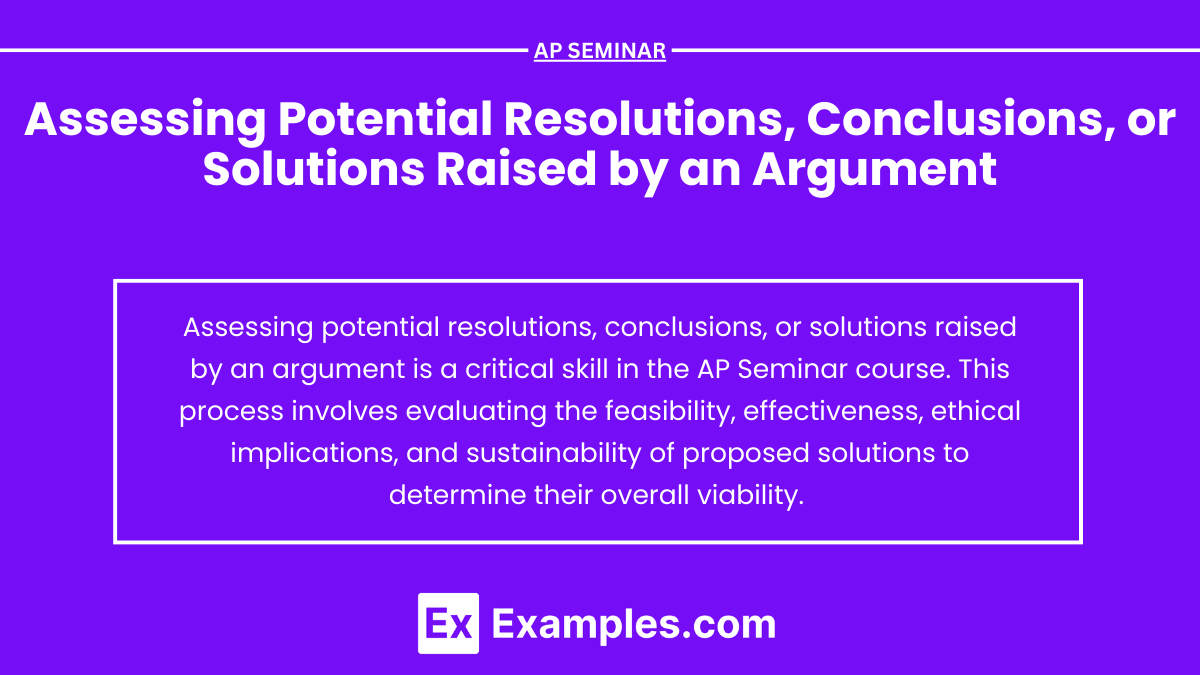Assessing potential resolutions, conclusions, or solutions raised by an argument is a critical skill in the AP Seminar course. This process involves evaluating the feasibility, effectiveness, ethical implications, and sustainability of proposed solutions to determine their overall viability. By thoroughly analyzing these aspects, students can form well-rounded judgments and present persuasive evaluations. Mastering this skill not only enhances critical thinking but also prepares students to tackle complex real-world issues with a balanced and informed perspective.
Learning Objectives
When studying the topic "Assessing Potential Resolutions, Conclusions, or Solutions Raised by an Argument" for the AP Seminar exam, you should aim to develop the ability to critically evaluate the feasibility, effectiveness, ethical implications, and sustainability of proposed solutions. You should learn to identify and analyze the strengths and weaknesses of these solutions, consider stakeholder perspectives, and use evidence to support your assessments. Additionally, focus on synthesizing information from various sources, addressing counterarguments, and presenting your findings clearly and persuasively. These skills are essential for formulating well-rounded conclusions and demonstrating advanced critical thinking and argumentation abilities.
Understanding the Argument

Before you can assess potential resolutions or solutions, you must thoroughly understand the argument being presented. This includes:
Identifying the Claim: Determine the main point or thesis of the argument.
Recognizing Supporting Evidence: Note the evidence and reasoning used to support the claim.
Understanding the Context: Consider the broader context in which the argument is made, including historical, cultural, social, and ethical factors.
Evaluating Resolutions and Solutions

Once you have a clear understanding of the argument, you can begin evaluating the proposed resolutions, conclusions, or solutions. This involves several key steps:
1. Analyzing Feasibility
Assess whether the proposed resolution or solution is practical and achievable.
Resources: Determine if the necessary resources (time, money, technology, etc.) are available to implement the solution.
Logistics: Consider the logistical aspects, including the steps required to implement the solution and any potential obstacles.
Stakeholder Support: Evaluate the level of support from key stakeholders, such as government agencies, organizations, and the public.
2. Assessing Effectiveness
Evaluate how effective the proposed solution will be in addressing the problem.
Impact: Consider the potential positive and negative impacts of the solution.
Scope: Determine if the solution addresses the problem comprehensively or if it only provides a partial remedy.
Evidence: Look for evidence that supports the effectiveness of the solution, including case studies, expert opinions, and empirical data.
3. Considering Ethical Implications
Examine the ethical considerations associated with the proposed solution.
Fairness: Ensure the solution is fair and equitable for all affected parties.
Rights: Consider whether the solution respects the rights and freedoms of individuals.
Consequences: Reflect on the potential long-term consequences of the solution, both positive and negative.
4. Evaluating Sustainability
Assess the long-term sustainability of the proposed solution.
Durability: Determine if the solution is likely to have lasting effects or if it is only a temporary fix.
Adaptability: Consider if the solution can adapt to changing circumstances and future challenges.
Environmental Impact: Evaluate the environmental sustainability of the solution, if applicable.
Formulating a Conclusion

After evaluating the proposed resolutions or solutions, you need to formulate a conclusion about their overall viability and effectiveness. This involves:
Synthesizing Information: Combine all the information gathered during your evaluation to form a comprehensive view of the solution.
Weighing Pros and Cons: Consider the strengths and weaknesses of the solution.
Making a Judgment: Based on your analysis, make a judgment about the solution's overall viability and effectiveness.
Methods for Assessing Potential Outcomes

Comparative Analysis
Definition: Comparing the proposed resolution or solution with alternative options.
Steps:
Identify alternative resolutions or solutions.
Evaluate the pros and cons of each option.
Determine which option offers the best balance of feasibility, effectiveness, and sustainability.
Cost-Benefit Analysis
Definition: Weighing the costs against the benefits of the proposed resolution or solution.
Steps:
Identify all potential costs (financial, social, environmental).
Identify all potential benefits.
Compare the overall value of benefits against the costs.
Scenario Analysis
Definition: Exploring different scenarios to understand potential outcomes.
Steps:
Create multiple scenarios based on different variables and assumptions.
Assess how the proposed resolution or solution performs under each scenario.
Identify the most likely and most challenging scenarios to understand the range of potential outcomes.


